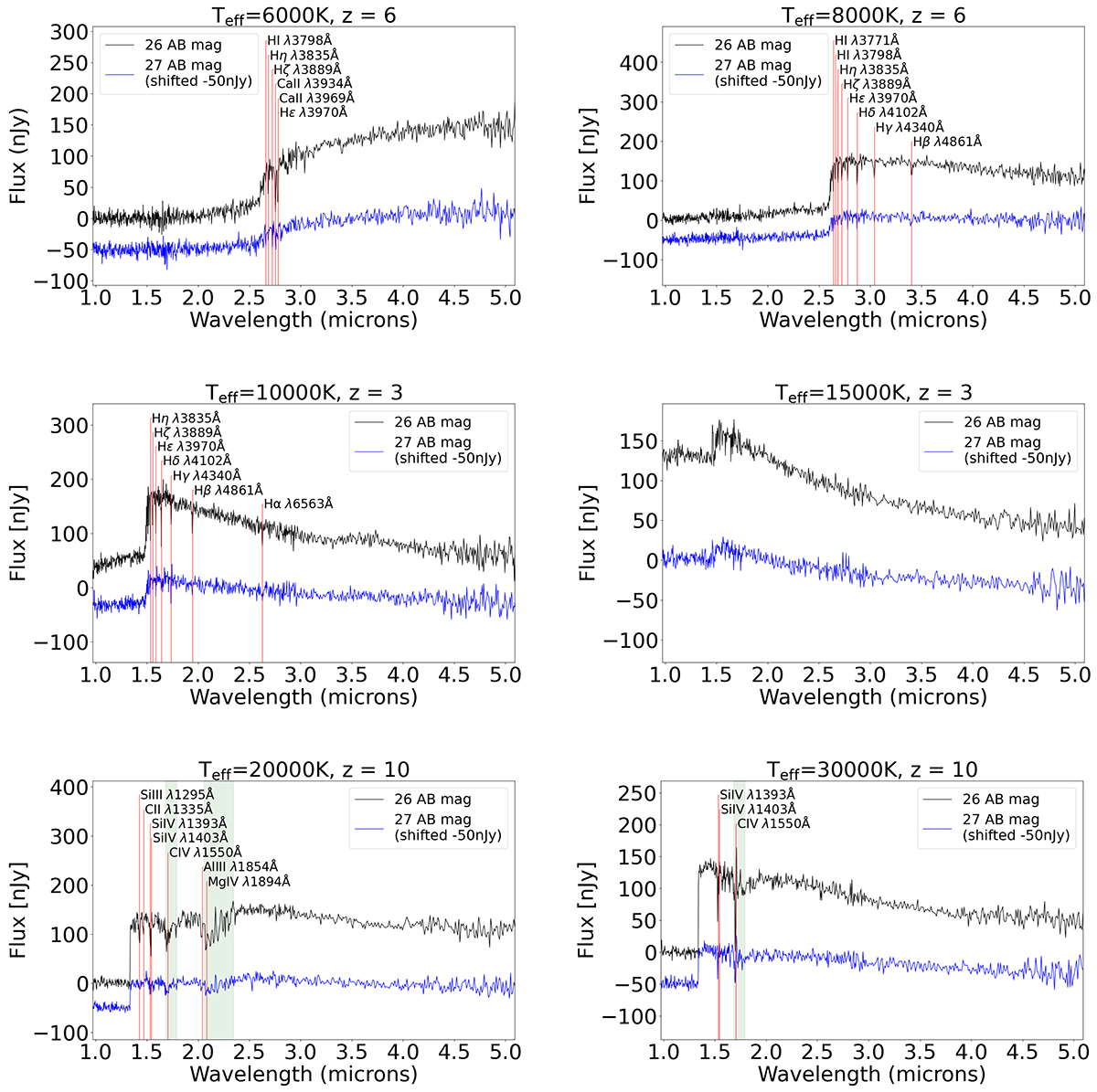Fig. 1.

Download original image
Six examples of the noisy mock JWST/NIRSpec spectra, for six different effective temperatures at various redshifts. Each figure includes the spectra for both a peak magnitude of 26 (in black) and 27 (in blue) AB mag, where the 27 mag spectrum is shifted down by 50 nJy to avoid cluttering. The metal absorption lines included in Table 1, as well as hydrogen lines, are marked in red, indicating features detectable at 26 AB mag. The green regions mark broader features, within which at least one of the contributing lines has been identified. In all figures, except one, detectable spectral lines appear. The exception, with Teff = 15 000 K and z = 3, instead gives an example of a spectrum with no detections. The general conclusion from these figures is that stars with higher effective temperatures at higher redshifts result in a larger number of detectable metal lines, while cooler stars instead contribute with many hydrogen Balmer lines.
Current usage metrics show cumulative count of Article Views (full-text article views including HTML views, PDF and ePub downloads, according to the available data) and Abstracts Views on Vision4Press platform.
Data correspond to usage on the plateform after 2015. The current usage metrics is available 48-96 hours after online publication and is updated daily on week days.
Initial download of the metrics may take a while.


